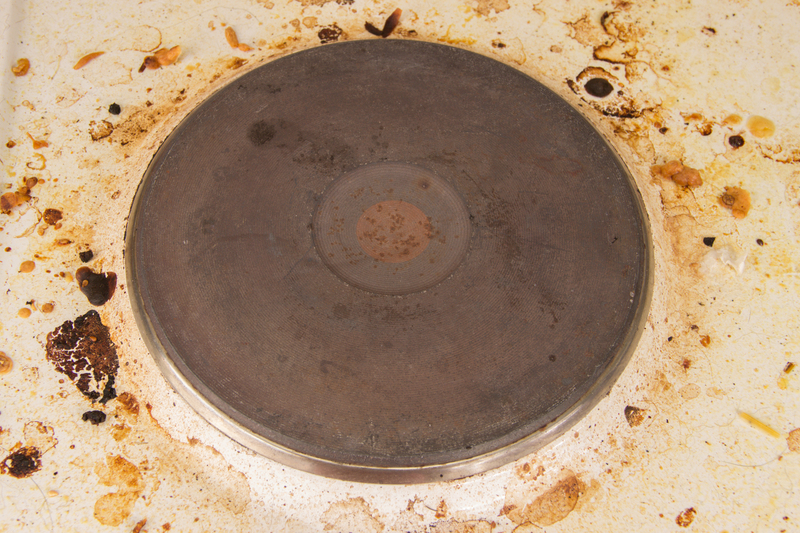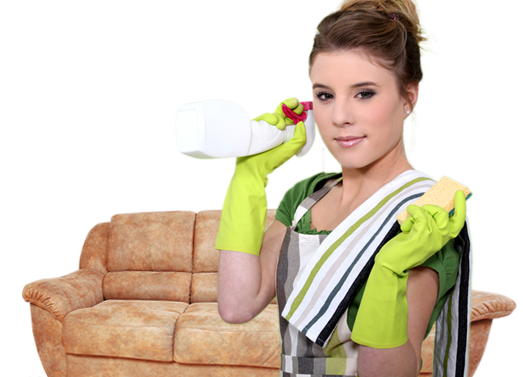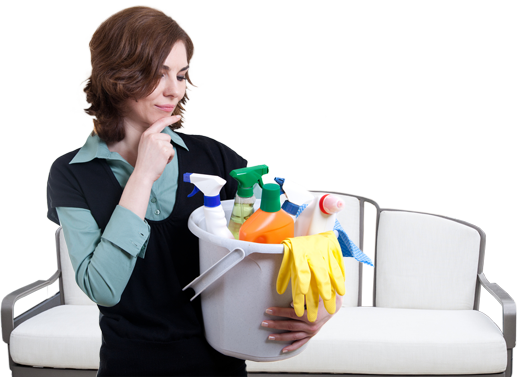Practical Solutions for a Permanent Mold-Free Bathroom
Posted on 03/06/2025
Practical Solutions for a Permanent Mold-Free Bathroom
A mold-free bathroom isn't just about cleanliness--it's about maintaining health, comfort, and the value of your home. Bathrooms, being warm and humid, present the perfect breeding ground for mold. If left untreated, mold can damage fixtures, walls, and even your health. Discover comprehensive and practical solutions to ensure your bathroom remains permanently free from mold.

Understanding the Mold Problem in Bathrooms
Before diving into proven strategies for a permanent mold-free bathroom, let's explore the root causes and why bathrooms are particularly vulnerable.
- Moisture: Showers, baths, and sinks release steam and splashing water, creating damp environments ideal for mold growth.
- Poor Ventilation: Without adequate airflow, humidity lingers, giving mold spores the exact conditions they need.
- Organic Matter: Even dust or soap scum provides food for mold.
- Lack of Sunlight: Bathrooms often lack windows or direct light, another factor that allows mold to develop and thrive.
Understanding these primary culprits is the first step in implementing practical, long-term mold prevention techniques.
Design and Renovation Tips for a Mold-Free Bathroom
Planning a remodel or refreshing your bathroom? Smart materials and thoughtful design choices provide the best foundation for a mold-resistant--and even mold-proof--bathroom.
1. Choose Mold-Resistant Building Materials
- Mold-resistant drywall (often called "green board") for walls and ceilings.
- Waterproof backer boards behind tiles in showers and wet areas.
- Mildew-resistant paint for walls and ceilings. Always opt for semi-gloss or high-gloss finishes in bathrooms.
- Non-porous tiles, such as porcelain or glass, are better than natural stone for minimizing moisture absorption.
- Use waterproof grout or epoxy grout to seal joints effectively.
2. Install Effective Ventilation Systems
- Install a quality exhaust fan designed for your bathroom's size and use.
- Consider a ventilation timer or humidity sensor for automatic operation after each shower.
- If possible, include a window that can be opened for natural airflow and sunshine.
3. Design for Quick Drying
- Incorporate features like curbless showers, sloped floors, and efficient drains for rapid water removal.
- Install wall-hung sinks and toilets to minimize hard-to-clean areas, creating less opportunity for mold to take hold.
- Opt for glass shower doors over curtains--glass dries more quickly and is easier to clean.
Routine Cleaning: Essential for a Permanent Mold-Free Bathroom
Even with the best building materials and designs, regular maintenance is essential. A routine cleaning schedule ensures any spores or moisture don't get a chance to become a problem.
1. Daily Practices
- Wipe down shower walls, fixtures, and wet surfaces after each use. Consider a squeegee for tiles and glass.
- Leave the bathroom door and windows open once showering is done--allowing the area to air dry.
- Turn on the fan for 15-20 minutes post-shower, even if you have a window open.
2. Weekly Deep Cleaning
- Target grout and corners: Use an old toothbrush or scrub brush with a mix of baking soda and vinegar or commercial mildew remover.
- Clean exhaust fan vent covers: Dust and moisture combine to form the perfect mold trap.
- Disinfect high-touch areas: Faucets, door handles, and light switches can harbor spores.
- Launder bath mats and towels in hot water--don't let them stay damp on the floor.
3. Monthly Maintenance
- Check for leaks: Inspect under sinks, around the base of the toilet, and behind the tub for signs of hidden drips.
- Inspect caulk and grout: Remove and replace any cracked or loose sections immediately.
- Wash shower curtains: If you have a fabric or vinyl shower curtain, put it in the wash monthly to stop mold in its tracks.
Tackling High Humidity: Key to a Permanent Mold-Free Bathroom
High humidity is the single biggest contributor to mold in bathrooms. To have a truly mold-free bathroom for the long run, you must keep moisture in check. Here's how:
Humidity Control Strategies
- Install a digital hygrometer to measure humidity levels. Bathrooms should stay below 50%, ideally around 30-45%.
- Run a dehumidifier if your bathroom lacks proper ventilation or if humidity remains high after showers.
- Fix leaks immediately. Small plumbing drips can dramatically raise moisture levels.
- Don't hang wet towels in the bathroom--dry them outdoors or in a ventilated laundry area.
A consistent approach to controlling bathroom humidity is one of the most effective methods for a permanent mold-free solution.
Natural and DIY Remedies for Bathroom Mold Prevention
Prefer natural bathroom mold prevention? These home remedies work well alongside other practical solutions:
- White vinegar: Spray undiluted vinegar on tiles, grout, and fixtures. Let sit for 30 minutes before rinsing for a chemical-free mold deterrent.
- Baking soda paste: Combine baking soda and water to scrub tough spots and absorb odors.
- Tea tree oil solution: Mix one teaspoon of tea tree oil with one cup of water. Spray on problem spots; tea tree is a natural antifungal agent.
- Hydrogen peroxide (3% solution): Spray and let sit for ten minutes, then scrub mold-prone areas.
Regular use of these solutions can keep mold spores at bay and are safe for most surfaces.
Long-Term Behavioral Changes for a Mold-Free Bathroom
A bathroom that truly stays mold-free permanently often comes down to smart daily habits. Empower your household with these simple but crucial behaviors:
- Always run your ventilation fan while showering and for 15-20 minutes afterward.
- Keep shower doors or curtains open after use to promote airflow.
- Remove damp towels and bathmats promptly after use.
- Use a squeegee or microfiber cloth to quickly dry surfaces.
- Report and repair leaks--even tiny ones--immediately.
Training children and guests can take time but yields incredible results for maintaining a permanently mold-free bathroom.
Professional Help and When to Seek It
Sometimes, even the most diligent homeowner faces a mold problem that's too large or persistent to tackle alone. Here's when to call in a professional:
- Visible mold growth covers an area larger than 10 square feet.
- You experience musty odors you can't locate.
- Previous cleaning methods haven't worked.
- The problem originates behind walls or under flooring.
A mold remediation expert can identify hidden sources of moisture, recommend lasting repair strategies, and restore a healthy environment.
Mistakes to Avoid for a Mold-Free Bathroom
- Ignoring minor leaks or drips: Small leaks lead to big mold problems over time.
- Skipping ventilation: Even in winter, fans and windows are essential.
- Using porous materials: Rugs, unsealed tiles, and unfinished wood absorb moisture.
- Storing too many items: Overcrowded shelves and baskets reduce airflow and trap humidity.

Frequently Asked Questions About Permanent Mold-Free Bathrooms
How often should I clean to prevent bathroom mold?
Wipe down wet surfaces daily, deep clean weekly, and check for leaks or grout issues monthly.
What is the best ventilation for mold control?
A properly sized exhaust fan, ideally with a timer or humidity sensor, is the most effective. If possible, supplement with a window.
Can I use bleach to kill mold?
While bleach can remove surface stains, it does not penetrate porous materials. For permanent mold control, use a combination of physical removal and ongoing ventilation, and consider more effective antifungal solutions.
Why does mold keep returning even after cleaning?
Recurrent mold suggests underlying moisture or ventilation issues. Focus on humidity control and fix leaks to stop mold growth at the source.
Conclusion: Achieving a Permanently Mold-Free Bathroom
The journey to a permanent mold-free bathroom is achieved by combining smart design, reliable ventilation, routine cleaning, vigilance for leaks, and habitual moisture management. By putting these practical solutions into action, you can ensure a healthier home, fresher air, and stunning bathroom surfaces that remain spotless for years to come.
Remember, consistency is the real secret to a mold-free bathroom for life. Start adopting these strategies today--and enjoy a cleaner, safer, and more beautiful bathroom tomorrow.
- Choose the right materials from the start.
- Ventilate, ventilate, ventilate!
- Clean regularly and promptly fix any water issues.
- Empower everyone at home with the know-how to keep your bathroom dry and mold-free.
For true peace of mind, make a permanent mold-free bathroom your next home project. With these practical solutions, it's within your reach!





